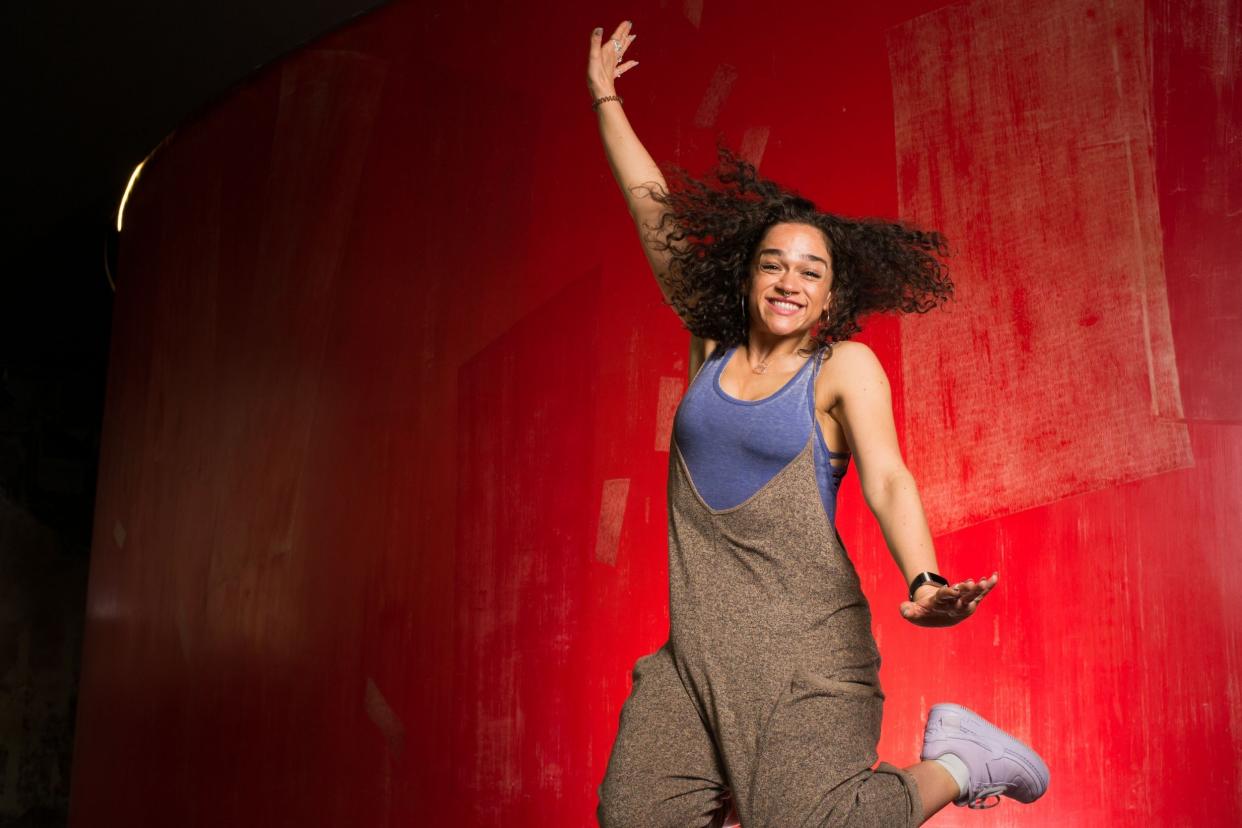Poet In Da Corner writer Debris Stevenson: 'Grime saved me'

"How do you explain that moment when you hear something and loads of things that didn’t make sense suddenly do make sense?”
Debris Stevenson is trying to describe the first time she heard the voice of Dizzee Rascal, an MC who changed the course of not only her life but arguably the entire UK music scene.
When the teenager from Bow released his debut album, Boy In Da Corner, in 2003, many listeners were lost for words. It was the first ever grime album and sounded bewilderingly futuristic — a salvo of deformed garage beats and hyperactive flows that was unlike anything before it, leaving many people scrambling around for an explanation.
But when Stevenson first heard Dizzee’s voice at the age of 12, a year or so before the release of the album, on a crackling cassette tape recording of his Choice FM set with Asher D, it all clicked into place.
Although she didn’t know it then, she is dyslexic — a formal diagnosis didn’t arrive until nine years later, with her assessor claiming it was “the clearest case of dyslexia” they had ever seen.
“If words or sentences don’t have context I have no idea what you’re talking about,” Stevenson says. “But a poem or a lyric or a bar about where I live, the people around me, the kind of school I went to, that suddenly had the utmost meaning.”
With a newfound confidence in words, she went on to become a performing poet and founder of her own company, The Mouthy Poets. She has now written a play, Poet In Da Corner, which opens at the Royal Court later this month.
It’s a semi-biographical account of the profound effect that the album, and grime as a whole, had on her life, covering her turbulent adolescence growing up in a Mormon household in Ilford. She refers to it as a time of “magic realism” — one where her best friend could turn up to her house wearing a plastic bag on his head because he didn’t have an umbrella, or where her mother could force-feed her brother two pints of milk as a punishment for disrespecting the religion. Both scenes make it into the play.
It also features reinterpretations of some of Dizzee’s best tracks — Sittin’ Here, Stop Dat and Fix Up, Look Sharp all appear with new lyrics that weave into Stevenson’s story. It’s something she started doing for fun but which she soon realised could be worthy of academic study.
“One of my university lecturers used to say mimicry is the first form of education,” she explains. “I would think, OK, that’s a sestina, that’s a sonnet — I’m going to do that. But what if Dizzee Rascal is form? What if we say: this is his rhythm, this is his metrical scheme? How can I use those devices to say what I want to say? And what is the power of that?”
She dissected every song on Boy In Da Corner and rebuilt each of them alongside a cast of MCs and producers. Those reworkings are performed live during Stevenson’s play, amid a soundtrack of other seminal grime beats. So, I ask her: is this the first grime musical?
She recoils slightly at the suggestion but believes nothing else quite like this has ever appeared in a theatre, at least not on this scale.
“When I first started doing this, Charlie Dark, my mentor, sat me down and said, ‘This is actually important. This is essential. Grime inspired an otherwise disenfranchised generation of people to dedicate their life to words, and you never really hear that’.”
Stevenson has worked closely with the theatre’s marketing team to provide as many free tickets as possible, giving people from similar backgrounds to her the opportunity to see it. “If no one in that audience gets that we need to give grime this detailed and celebratory narrative it deserves, it could end up being this voyeuristic kind of thing,” she says.
“My aspiration for the show is that people who know grime, and [to whom it] is as important as it is to me, they can come and feel at home, regardless of whether they’ve been in the building or to a theatre before. For people who don’t know what grime is, [I would like them] to come and learn, to open the door for them and feel welcome.”
Another thing Stevenson is very aware of is the connotations of a white woman putting on a theatre production about grime, a genre of predominantly black artists. It is addressed in the script — the play’s denouement tackles the issue in a particularly affecting way — and something she has thought about at length.
“There was definitely a moment where I stopped and thought, ‘I’m doing a show at the Royal Court about grime, there’s going to be a poster of me and people are going to turn around and say, what?’ I know people are. I would, probably.”
She adds: “The reality was, Mormonism isn’t serving me. I’m pansexual and my mum is homophobic. My brothers, the only hope I have, aren’t in the house — I’m trapped. I hear Dizzee and it just makes sense. That’s my community. I learned to spit bars, I learned about grime, and then suddenly I learned about how to do my hair, the food I cook, the dancing I do. That saved me.”
Poet In Da Corner is at the Royal Court Downstairs, SW1W 8AS (royalcourttheatre.com), from September 21 until October 6

 Yahoo News
Yahoo News 
